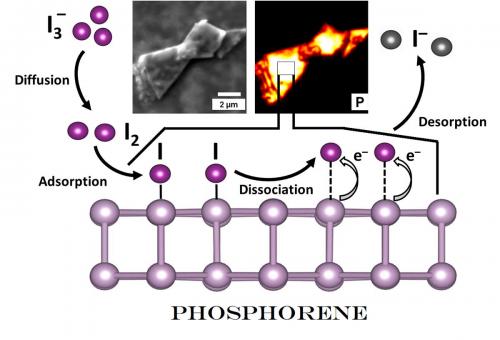Researchers from Flinders University, the University of Adelaide and University of Technology, Sydney, have used experimental and density functional theory studies to show that few-layer black phosphorus (FL-BP) sheets, or solution-processed phosphorene, can act as catalytically active sites and show excellent electrocatalytic activity for triiodide reduction in dye-sensitised solar cells (Batmunkh M., Shrestha A., Bat-Erdene M., Nine M.J., Shearer C.J., Gibson C.T., Slattery A.D., Tawfik S., Ford M.J., Dai S., Qiao S., Shapter J.G. Angew. Chem. Int. Ed. 2018, https://doi.org/10.1002/anie.201712280). The FL-BP sheets were prepared by microwave exfoliation. A photoelectrochemical device was fabricated with a newly designed heteroelectrocatalyst consisting of carbon nanotubes co-doped with nitrogen and sulfur that were decorated with cobalt sulfide (CoSx) nanoparticles and coated with FL-BP. The device displayed an impressive photovoltaic efficiency of 8.31%, outperforming solar cells based on the commonly used expensive platinum-based electrode. This work paves the way to advance phosphorene research and to use phosphorene-based electrocatalysts for next-generation energy-storage systems.


The Royal Australian Chemical Institute's magazine for and about the chemical science professions

